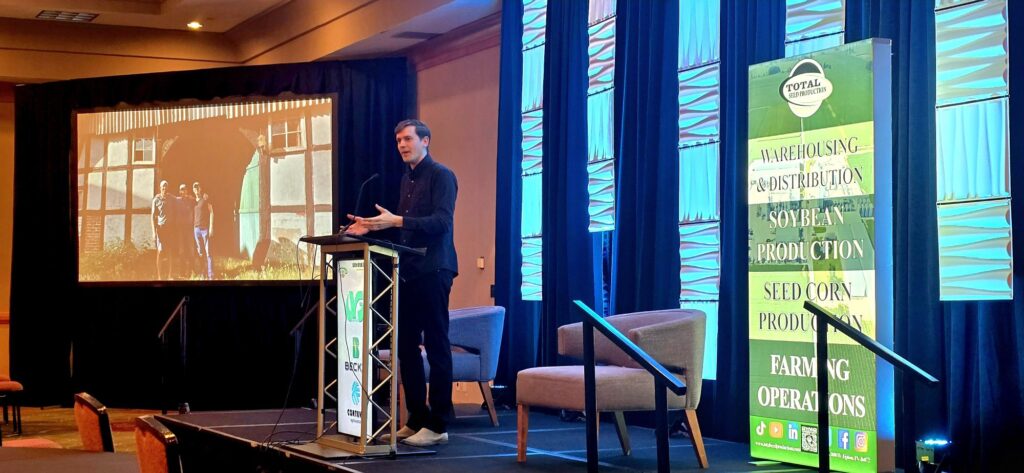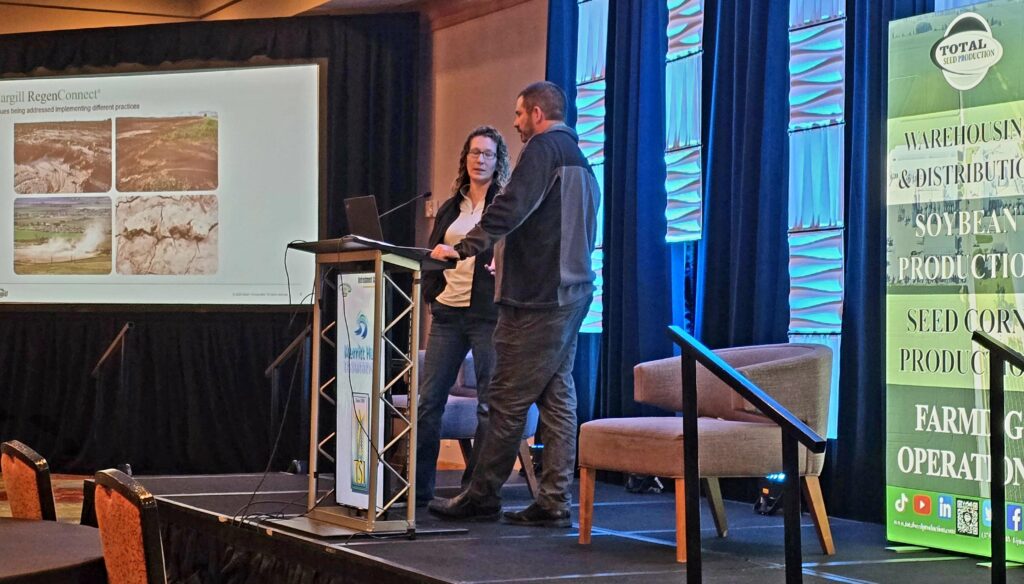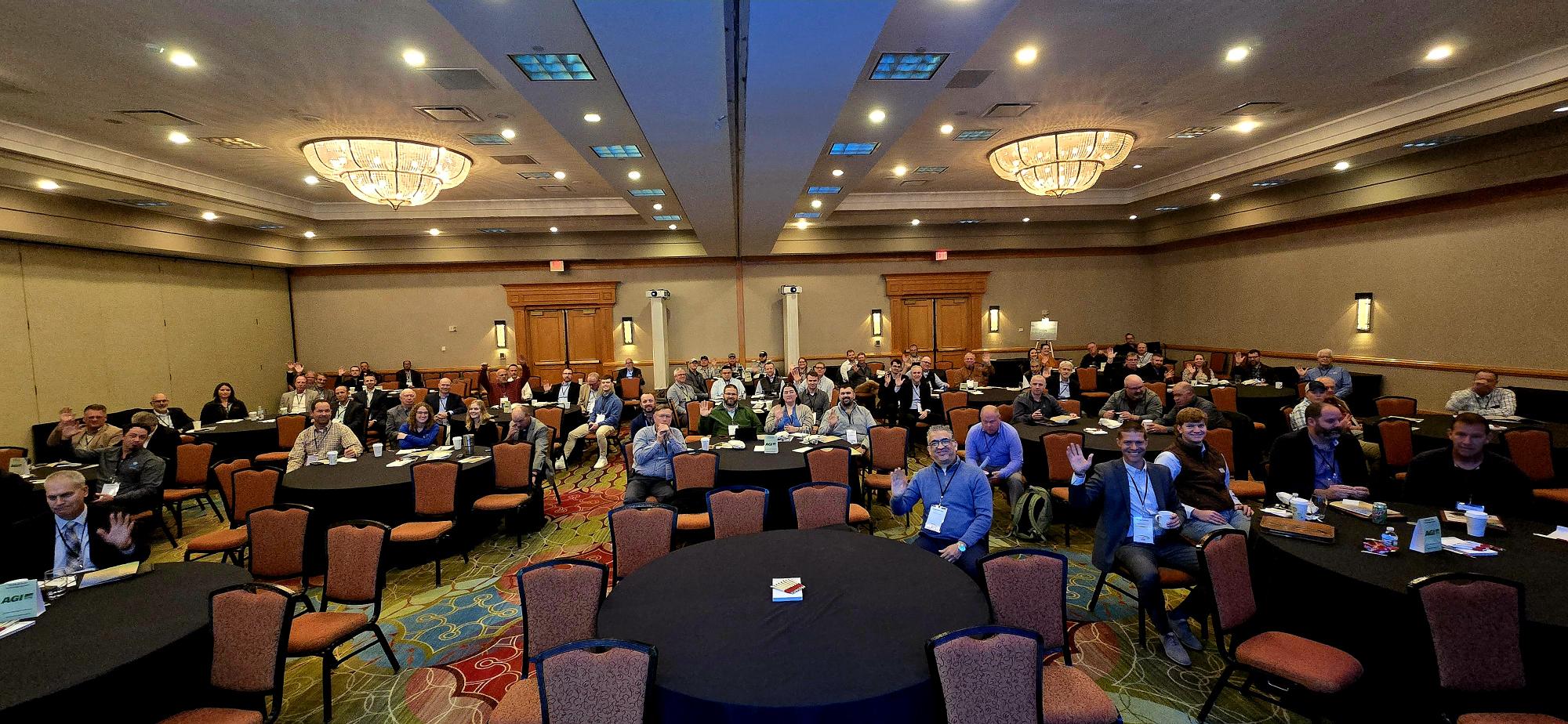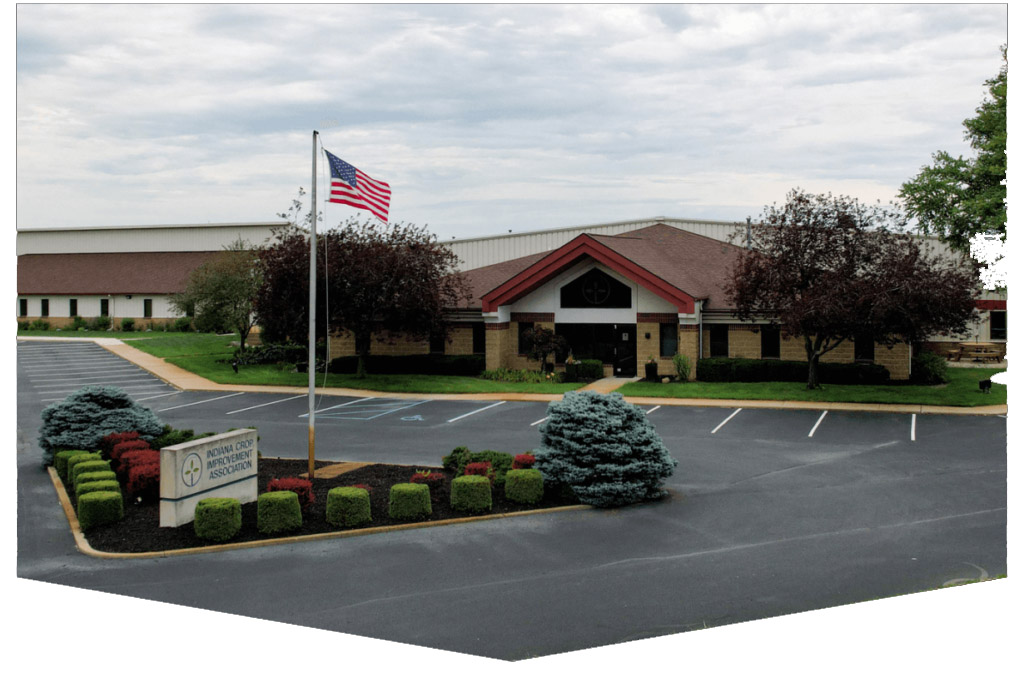Speakers tackle grain tech trends, biologicals, cover crops and more.
Tech Trends
Lucas Frye with Amber Agriculture kicked off a day of indepth sessions at the125th Corn Belt Seed Conference. He discussed tech trends that are impacting the seed industry and agriculture as a whole.

Frye highlighted the depth of generational knowledge inherent in agriculture and the seed industry:
“Agriculture has a ton of tacit knowledge. It’s super efficient,” he said. “AI is probably not going to change it that much… 100,000 farm families have been doing it since the Dark Ages.”
While discussing AI and how it impacts R&D in various sectors, Frye drew an analogy relevant to seed technology and product development timelines. He said AI could reduce the amount of time it takes to get things, like new seed traits, to market.
Frye also touched on the potential impact of automation and AI in seed selection, balancing technology with tradition.
“Even the seed catalog, right? We could toss this into software… but there’s something kind of fun about picking seed out every year. It’s good sport,” he said.
While not specifically naming seed industry processes alone, Frye made broader points that apply directly to seeds and their technology applications. He likened the “fear” around AI to the same kind of fear that Americans had with gene editing.
Navigating Biologicals
In a discussion about biologicals, Agraxiune’s Bond McInnis talked about how corn diseases like gray leaf spot and tar spot can devastate crops, depending heavily on environmental and biological conditions. Researchers and industry experts have emphasized the importance of combining synthetic fungicides with biological treatments to enhance disease control and boost corn yields. Trials conducted across key production areas, such as Pennsylvania, Iowa and Wisconsin, highlighted the effectiveness of this multi-faceted approach.

McInnis explained how both synthetic and biological treatments performed well against disease incidence. Employing a programmatic approach—alternating and combining products—proved essential to achieving broad-spectrum disease control, reducing abiotic stress, and maximizing flowering and nutrient efficiency.
“Having that program approach, whether you’re trying to control disease organisms, you’re trying to affect the root development, to me, gives you the best performance,” he said.
Selecting the right strains and understanding their specific effects on plant growth and development were crucial to the program’s success.
“When you look at a product, any microorganisms, either fungi or bacteria… to me, it’s what are those bacteria you have? Have you identified them? Have you identified their mode of action?” he said, pointing out the importance of precision in microbial selection.
As researchers continue to optimize product applications and integrate new tools, growers are urged to adopt multifaceted strategies for healthier, more productive crops.
“The microorganisms are either benefiting on… pest control, but they are also… impacting that nutrient uptake, that water uptake,” McInnis highlighted, showcasing the far-reaching impact of a well-designed disease management plan.
Cover Crop Conversations
Janelle Leach, U.S. Conservation Agronomist for Cargill, discussed integrating cover crops and their role in carbon markets. Addressing the complexities and opportunities within this emerging field, Leach emphasized the multifaceted impact of climate change, market drivers, and consumer demand on farming practices.

“The carbon market is a polarizing topic,” she said. “But it really is important to understand the carbon markets and the opportunity that’s at hand.”
She acknowledged both the challenges and opportunities faced by farmers, driven in part by extreme weather patterns, consumer awareness, and corporate commitments to sustainability.
Leach provided a comprehensive overview of carbon market terminology, focusing on the value of carbon credits.
“A carbon credit is equivalent to the removal or the reduction of one ton of CO2 from the atmosphere,” she explained, emphasizing the importance of permanence and additionality in the practice changes needed to generate these credits.
She detailed how Cargill works with farmers to verify carbon sequestration through third-party monitoring, saying, “Cargill pays our farmers based on actual carbon sequestration.”
Highlighting practical implementation, Leach introduced a farmer, Tom Murphy, who shared his experiences.
“I’m a first-generation farmer,” said Murphy. “We started with a couple hundred acres of no-till and cover crops. Now, we’re at about 2,800 acres.” Murphy elaborated on the benefits he’s seen, including improved yields and better water management. “By planting green, we’re keeping our crops greener longer and improving water percolation, whether it’s dry or too wet.”
Murphy encouraged farmers to “start small” with cover crop adoption, citing his own learning curve.
“There is a learning curve. We’ve had some great success stories and some epic failures,” he shared candidly. Despite challenges, he expressed optimism about continued expansion.
Leach stressed the potential of cover crops and carbon markets to improve soil health and reduce reliance on herbicides. “We’re focusing on soil health, which ultimately takes us back to the basics,” she said.











